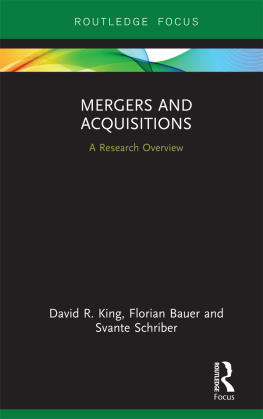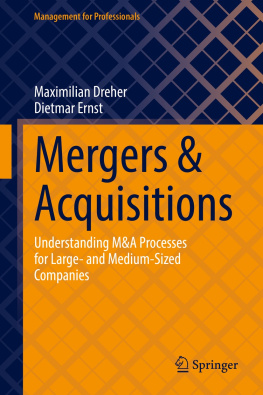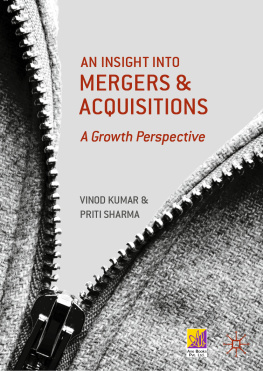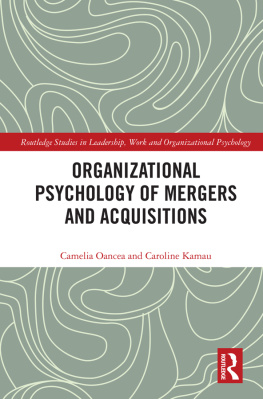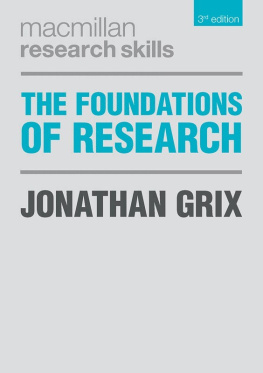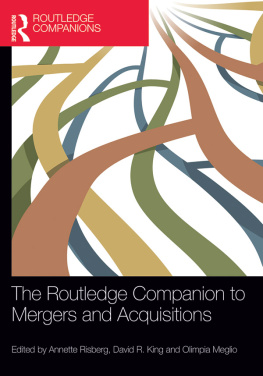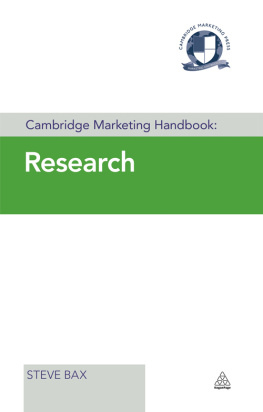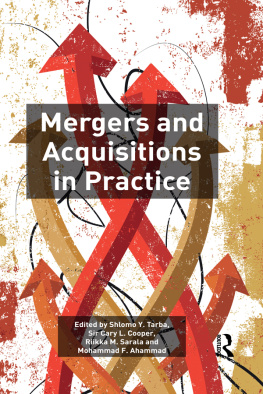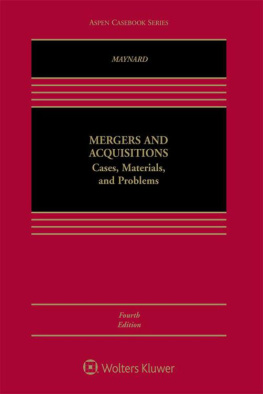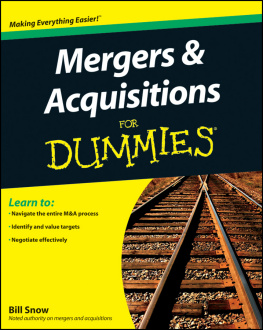Abramovitz, M. (1986). Catching up, forging ahead, and falling behind. Journal of Economic History , (2), 385406.
Achtenhagen, L., Brunninge, O., & Melin, L. (2017). Patterns of dynamic growth in medium-sized companies: Beyond the dichotomy of organic versus acquired growth. Long Range Planning , (4), 457471.
Ahammad, M. F., Glaister, K. W., Weber, Y., & Tarba, S. Y. (2012). Top management retention in cross-border acquisitions: The roles of financial incentives, acquirers commitment and autonomy. European Journal of International Management , (4), 458480.
Ahuja, G., & Katila, R. (2001). Technological acquisitions and the innovation performance of acquiring firms: A longitudinal study. Strategic Management Journal , (3), 197220.
Ahuja, G., & Lampert, M. C. (2001). Entrepreneurship in the large corporation: A longitudinal study of how established firms create breakthrough inventions. Strategic Management Journal , (67), 521543.
Alderson, M. J., & Betker, B. L. (2003). Managerial discretion costs and the acquisition of capital: evidence from forced warrant exercise. Financial Management, 109126.
Alexandridis, G., Mavrovitis, C. F., & Travlos, N. G. (2012). How have M&As changed? Evidence from the sixth merger wave. The European Journal of Finance , (8), 663688.
Allatta, J. T., & Singh, H. (2011). Evolving communication patterns in response to an acquisition event. Strategic Management Journal , (10), 10991118.
Allen, L., Jagtiani, J., Peristiani, S., & Saunders, A. (2004). The role of bank advisors in mergers and acquisitions. Journal of Money, Credit and Banking , (2), 197224.
Almor, T., Tarba, S. Y., & Margalit, A. (2014). Maturing, technology-based, born-global companies: Surviving through mergers and acquisitions. Management International Review , (4), 421444.
Alvesson, M., & Sandberg, J. (2013). Has management studies lost its way? Ideas for more imaginative and innovative research. Journal of Management Studies , (1), 128152.
Alvesson, M., & Sandberg, J. (2014). Habitat and habitus: Boxed-in versus box-breaking research. Organization Studies, 35(7), 967987.
Amis, J., Slack, T., & Hinings, C. R. (2004). The pace, sequence, and linearity of radical change. Academy of Management Journal , (1), 1539.
Anderson, H. H. H., Havila, V., & Salmi, A. (2001). Can you buy a business relationship? On The importance of customer and supplier relationships in acquisitions. Industrial Marketing Management , (7), 575586.
Anderson, R. C., Mansi, S. A., & Reeb, D. M. (2003). Founding family ownership and the agency cost of debt. Journal of Financial Economics , (2), 263285.
Andrade, G., Mitchell, M., & Stafford, E. (2001). New evidence and perspectives on mergers. Journal of Economic Perspectives , (2), 103120.
Andriopoulos, C., & Lewis, M. W. (2009). Exploitation-exploration tensions and organizational ambidexterity: Managing paradoxes of innovation. Organization Science , (4), 696717.
Angwin, D. (2001). Mergers and acquisitions across European borders: National perspectives on preacquisition due diligence and the use of professional advisors. Journal of World Business , (1), 3257.
Angwin, D. (2004). Speed in M&A Integration:: The First 100 Days. European Management Journal, 22(4), 418430.
Angwin, D., & Meadows, M. (2015). New integration strategies for post-acquisition management. Long Range Planning , , 235251.
Anslinger, P. L., & Copeland, T. E. (1996). Growth through acquisitions: A fresh look. McKinsey Quarterly , , 9697.
Ansoff, H. I. (1965). Corporate strategy . New York, NY: McGraw-Hill.
Appelbaum, S. H., Gandell, J., Yortis, H., Proper, S., & Jobin, F. (2000). Anatomy of a merger: Behavior of organizational factors and processes throughout the pre-during-post-stages (part 1). Management Decision , (9), 649662.
Argote, L. (2013). Organizational learning: Creating, retaining and transferring knowledge . Boston, MA: Springer.
Arikan, A. M., & McGahan, A. M. (2010). The development of capabilities in new firms. Strategic Management Journal , (1), 118.
Arikan, A. M., & Stulz, R. M. (2016). Corporate acquisitions, diversification, and the firms life cycle. Journal of Finance , (1), 139194.
Armenakis, A., & Bedeian, A. (1999). Organizational change: A review of theory and research in the 1990s. Journal of Management , , 293315.
Ashkenas, R. N., & Francis, S. C. (2000). Integration managers: Special leaders for special times. Harvard Business Review , (6), 108116.
Augustine, N. R. (1997). Reshaping an industry: Lockheed Martins survival story. Harvard Business Review , (3), 8394.
Avery, H. (2013, September 18). The numbers that prove Lehman was deal of the century for Barclays. EuroMoney . Retrieved 17 August 2018 from www.euromoney.com/article/b12kjsf0lgb850/the-numbers-that-prove-lehman-was-deal-ofthe-century-for-barclays?copyrightInfo=true.
Balakrishnan, S., & Fox, I. (1993). Asset specificity, firm heterogeneity and capital structure. Strategic Management Journal , (1), 316.
Balogun, J., & Johnson, G. (2004). Organizational restructuring and middle manager sensemaking. Academy of Management Journal , , 523549.
Banerjee, A., & Eckard. E. W. (1998). Are mega-mergers anticompetitive? Evidence form the first great merger wave. RAND Journal of Economics , (4), 803827.
Barkema, H. G., & Schijven, M. (2008). Toward unlocking the full potential of acquisitions: The role of organizational restructuring. Academy of Management Journal , (4), 696722.
Basu, S., Hwang, L., & Jan, C. L. (1998). International variation in accounting measurement rules and analysts earnings forecast errors. Journal of Business Finance & Accounting , (910), 12071247.
Basuil, D. A., & Datta, D. K. (2015). Effects of industry-and region-specific acquisition experience on value creation in cross-border acquisitions: The moderating role of cultural similarity. Journal of Management Studies , (6), 766795.
Bauer, F. (2015). A literature review and a suggested future research agenda on speed of integration in M&A. In S. Finkelstein & C. Cooper (Eds.), Advances in mergers and acquisitions (Vol. 15, pp. 337353). Bingley, UK: Emerald Group Publishing Limited.
Bauer, F., Dao, M. A., Matzler, K., & Tarba, S. Y. (2017). How industry lifecycle sets boundary conditions for M&A integration. Long Range Planning , (4), 501517.
Bauer, F., King, D., & Matzler, K. (2016). Speed of acquisition integration: Separating the role of human and task integration. Scandinavian Journal of Management , (3), 150165.
Bauer, F., & Matzler, K. (2014). Antecedents of M&A success: The role of strategic complementarity, cultural fit, and degree and speed of integration: Antecedents of M&A success. Strategic Management Journal , , 269291.
Bauer, F., Matzler, K., & Wolf, S. (2016). M&A and innovation: The role of integration and cultural differences: A central European targets perspective. International Business Review , (1), 7686.
Bauer, F., Schriber, S., Degischer, D., & King, D. R. (2018). Contextualizing speed and cross-border acquisition performance: Labor market flexibility and efficiency effects. Journal of World Business , (2), 290301.
Bauer, T., & Green, S. (1998). Testing the combined effects of newcomer information seeking and manager behavior on socialization. Journal of Applied Psychology , , 7283.
Bebenroth, R., & Hemmert, M. (2015). Country-level antecedents of target firms post-acquisition business performance: A study of inbound Japanese and Korean M&As. Asian Business & Management, 14(4), 303325.
Beckman, C. M., & Haunschild, P. R. (2002). Network learning: The effects of partners heterogeneity of experience on corporate acquisitions. Administrative Science Quarterly , (1), 92124.

